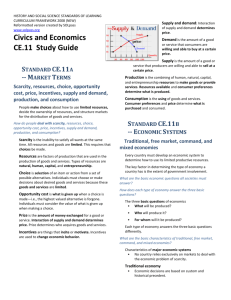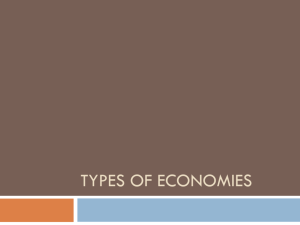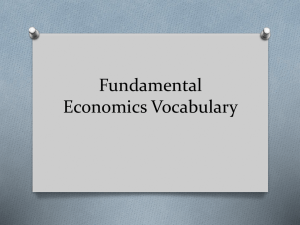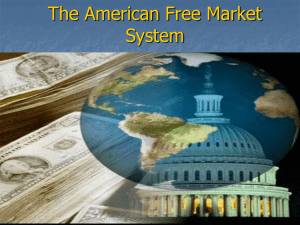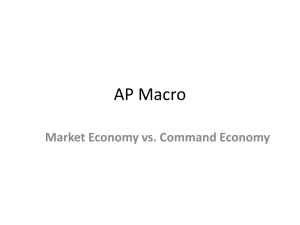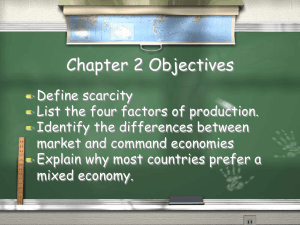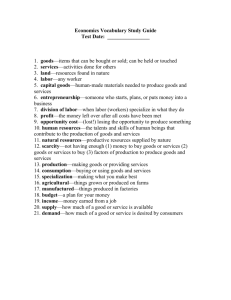Name
advertisement
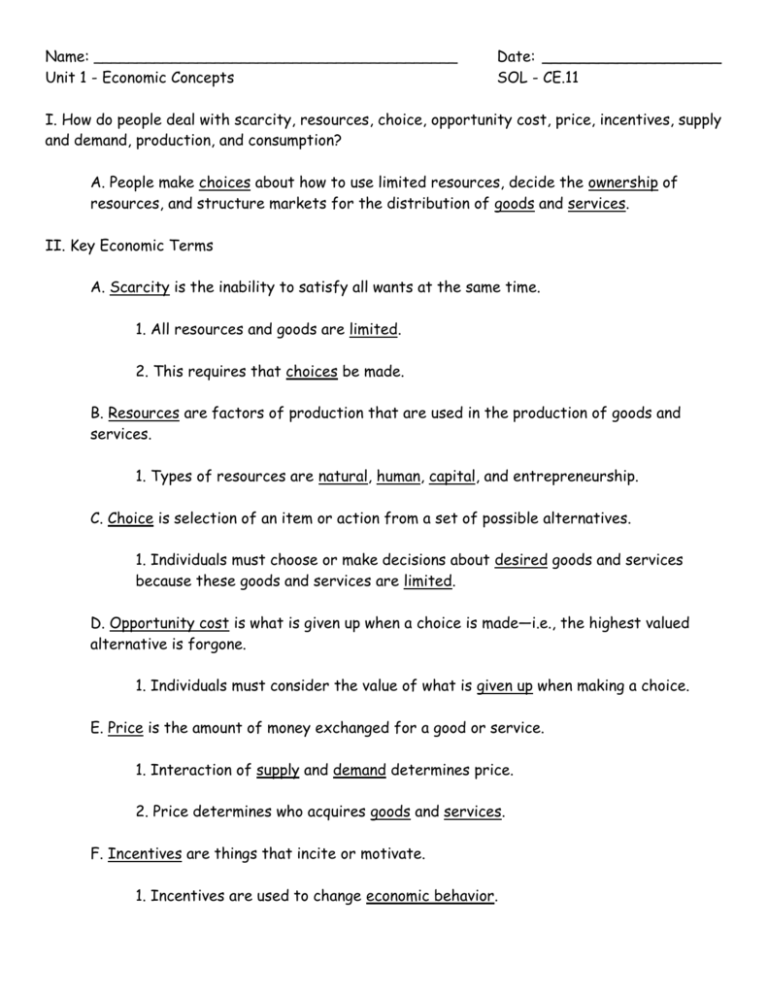
Name: __________________________________________ Unit 1 - Economic Concepts Date: ___________________ SOL - CE.11 I. How do people deal with scarcity, resources, choice, opportunity cost, price, incentives, supply and demand, production, and consumption? A. People make choices about how to use limited resources, decide the ownership of resources, and structure markets for the distribution of goods and services. II. Key Economic Terms A. Scarcity is the inability to satisfy all wants at the same time. 1. All resources and goods are limited. 2. This requires that choices be made. B. Resources are factors of production that are used in the production of goods and services. 1. Types of resources are natural, human, capital, and entrepreneurship. C. Choice is selection of an item or action from a set of possible alternatives. 1. Individuals must choose or make decisions about desired goods and services because these goods and services are limited. D. Opportunity cost is what is given up when a choice is made—i.e., the highest valued alternative is forgone. 1. Individuals must consider the value of what is given up when making a choice. E. Price is the amount of money exchanged for a good or service. 1. Interaction of supply and demand determines price. 2. Price determines who acquires goods and services. F. Incentives are things that incite or motivate. 1. Incentives are used to change economic behavior. G. Supply and demand: Interaction of supply and demand determines price. 1. Demand is the amount of a good or service that consumers are willing and able to buy at a certain price. 2. Supply is the amount of a good or service that producers are willing and able to sell at a certain price. H. Production is the combining of human, natural, capital, and entrepreneurship resources to make goods or provide services. 1. Resources available and consumer preferences determine what is produced. I. Consumption is the using of goods and services. 1. Consumer preferences and price determine what is purchased and consumed. II. What are the basic economic questions all societies must answer? A. The three basic questions of economics: 1. What will be produced? 2. Who will produce it? 3. For whom will it be produced? III. How does each type of economy answer the three basic questions? A. Every country must develop an economic system to determine how to use its limited productive resources. B. The key factor in determining the type of economy a country has is the extent of government involvement. C. Each type of economy answers the three basic questions differently. IV. What are the basic characteristics of traditional, free market, command, and mixed economies? A. Traditional economy 1. Economic decisions are based on custom and historical precedent. 2. People often perform the same type of work as their parents and grandparents, regardless of ability or potential. B. Free market economy 1. Private ownership of property/resources 2. Profit motive 3. Competition 4. Consumer sovereignty 5. Individual choice 6. Minimal government involvement in the economy 7. No country relies exclusively on markets to deal with the economic problem of scarcity. C. Command economy 1. Central ownership (usually by government) of property/resources 2. Centrally-planned economy 3. Lack of consumer choice D. Mixed economy 1. Individuals and businesses are owners and decision makers for the private sector. 2. Government is owner and decision maker for the public sector. 3. Government’s role is greater than in a free market economy and less than in a command economy. 4. Most economies today, including the United States, are mixed economies. V. What are the essential characteristics of the United States economy? A. The United States economy is primarily a free market economy; but because there is some government involvement it is characterized as a mixed economy. B. Government intervenes in a market economy when the perceived benefits of a government policy outweigh the anticipated costs. C. Characteristics of the United States economy 1. Markets are generally allowed to operate without undue interference from the government. 2. Prices are determined by supply and demand as buyers and sellers interact in the marketplace. 3. Private property: Individuals and businesses have the right to own real and personal property as well as the means of production without undue interference from the government. 4. Profit: Profit consists of earnings after all expenses have been paid. 5. Competition: Rivalry between producers and/or between sellers of a good or service usually results in better quality goods and services at lower prices. 6. Consumer sovereignty: Consumers determine through purchases what goods and services will be produced. 7. Government involvement in the economy is limited. 8. Most decisions regarding the production of goods and services are made in the private sector.
